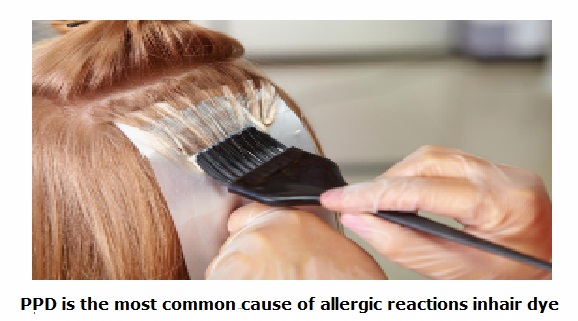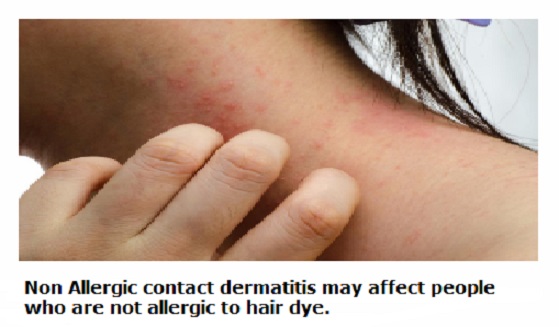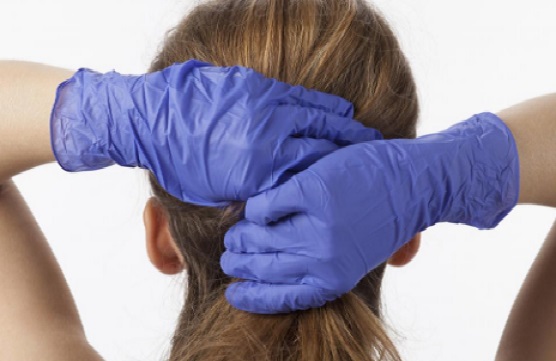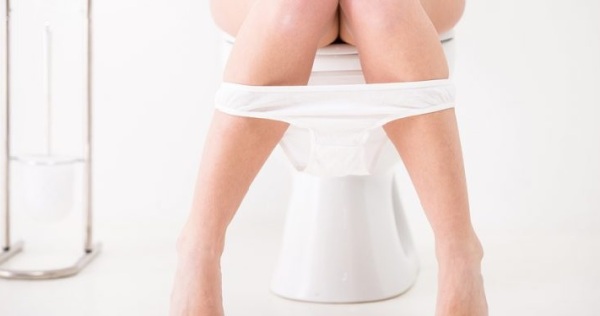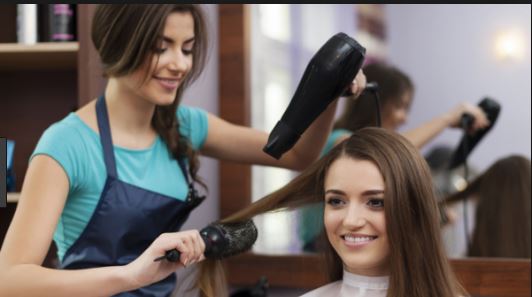
- People can experience hair breakage that affects all types of hair from straight to curly. It can make hair look frizzy or coarse either at the ends or near the top, or crown, of the head.
In most cases, hair breakage is temporary, and people can repair their hair and restore its strength by using products and home remedies.What is the cause?
The following section explores the common causes of hair breakage:
1. Hair products and styling - Common causes of hair breakage can include styling and over-brushing.
- Products that people use for coloring, perming, or relaxing the hair contain chemicals that can weaken the hair and make it more likely to break.
- Even some shampoos can cause the hair to break, become brittle, or turn frizzy.A 2014 study reported that the acidity, or pH, of a shampoo may affect hair breakage. Certain shampoos are alkaline, or basic, which can cause a negative charge on the hair. This creates more friction between hair strands and can lead to hair breakage.
Avoiding the application of harsh chemicals to the hair and choosing a shampoo with a neutral pH can improve hair health.2. Over-brushing
Brushing the hair too much can also cause breakage.
People may not need to brush their hair as much as they think. The American Academy of Dermatology advise only brushing hair as much as people need to style it. Notably, the idea that people should brush their hair with 100 brushstrokes is a myth.3. Heat and lack of moisture
Frequently using heat on the hair can damage the hair shafts and remove the moisture from the hair, which can cause brittle hair and hair breakage.
Over time, the following heat treatments can damage the hair: - blow-dryers
- straighteners
- curling tongs
- Hot weather and humid climates can also dry the hair out and increase the risk of breakage.
People can often avoid and prevent future hair breakage by reducing heat treatments.
4. Towel drying
Rubbing wet hair with a towel can damage the hair, increase frizz, and cause breakage. Wet hair breaks more easily than dry hair.
Instead of rubbing the hair, try wrapping a towel around it to absorb the moisture, or letting it dry naturally in the air.
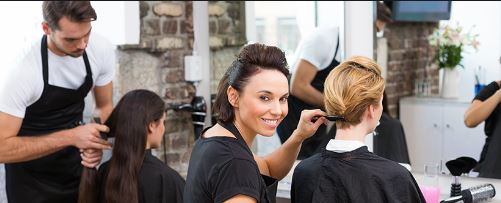
5. Not having regular haircuts
A lack of regular haircuts can result in split ends. These broken ends make the hair more likely to break higher up, nearer the hair shaft.
Getting regular haircuts, even when an individual is growing out their hair, can help to keep hair healthy and strong.
A hairdresser will also be able to give advice for maintaining healthy hair and addressing any current issues people may be experiencing.
6. Diet

Nutrition plays an integral part in promoting healthy hair. If people are deficient in certain nutrients, they may have weakened hair that appears dry, dull, or brittle. Severe nutrient deficiencies may also lead to hair loss.
Eggs and fish contain biotin, which is essential for healthy hair growth, and Brazil nuts offer hair-boosting selenium. Learn about foods for healthy hair growth here.
It is essential that people get a balanced diet that contains plenty of the following:
*omega-3 fatty acids
*protein
*vitamin D
*iron
*zinc
Once people resolve any nutritional deficiencies, they will likely find their hair becomes stronger and healthier again.
7. Tight hairstyles

If people are tying their hair back frequently in tight hairstyles, or using elastic bands to tie their hair up, this can lead to hair breakage. Tight hairstyles can stretch or break the hair away from the root.
If people regularly wear their hair in tight styles such as buns, cornrows, or braids, it may lead to a type of hair loss called traction alopecia. Although this is a temporary hair loss that the hair can recover from, it can become permanent if it keeps happening.
Elastic ties can also pull tightly on the hair and increase the risk of breakage. People can switch to covered hair ties and wear their hair in a variety of loose styles to relieve pressure on the hair.
8. Stress
Extreme stress can cause damage to the hair and a condition called telogen effluvium. A severe shock or stress can cause the hair roots to reach the resting stage of their growth cycle before they are meant to and the hair comes loose from the scalp.
Once stress has passed, people will usually find the hair regrows. If people notice unusual amounts of hair shedding, they should see their doctor to check for the underlying cause.
9. Thyroid disorders

Thyroid disorders can cause hair breakage. If people have a thyroid disorder, they may notice very brittle, dry, and dull hair. Hair can also become thinner, or people may notice excessive shed ng or bald patches.
People with a thyroid disorder may also notice changes to their skin and nails, including the following:
- nails crumble or break easily
- wounds heal more slowly than usual
- deep lines on the palms and soles of the feet
- itchy skin
If people notice any of these symptoms, along with fatigue, they should see their doctor to check if they have a thyroid disorder.
10. Eating disorders
Eating disorders can cause breakage to the hair and can lead to hair loss.
The malnutrition and health issues that come from eating disorders can disrupt the natural cycle of hair growth. This disruption can cause hair to break off during the growth phase of the hair cycle, which is called the anagen.
Treating hair breakage
People can often boost the health of their hair by addressing the cause, using hair-strengthening products, or changing their haircare routine.
The following sections look at ways to treat hair breakage:
Change hair care routine
A person should change their hair care routine and use a conditioner to treat hair breakage.
Switching hair care routines can help if hair products or styling methods, such as harsh chemicals or heat treatments, are damaging the hair. Try air-drying the hair and using gentle products that contain fewer harsh chemicals.People may find switching their hair products to ones that care for damaged hair, restore moisture, and strengthen hair may help to prevent hair breakage.If people swim often, they can use a shampoo and conditioner that specifically restores any damage that chlorine and other chemicals in pools can cause to the hair.
Use a conditioner
Not using a conditioner after washing hair with shampoo can result in hair damage. A conditioner neutralizes the charge of the hair, which can help to lessen frizz and detangle hair. Conditioners can also help to increase shine and smoothness of hair, making it more manageable.
Reduce stress
If stress is the cause of hair breakage, people can arrange to take time to relax and unwind, which can improve the condition of their hair. Read about ways to bust stress here.
Dietary changes
When the hair has lost its strength because of a person’s diet, they can try eating foods that strengthen the hair again. These foods include ones with plenty of protein, omega-3s, iron, biotin, and zinc.
PREVENTION
People can take steps to avoid future hair breakage, including the following:
- using a conditioner after shampooing hair
- massaging shampoo into the scalp and rinsing it through the hair, rather than rubbing it in
- wearing a swimming hat to protect the hair from chlorine and other chemicals in pools
- washing hair with a specialized swim shampoo after swimming
- drying hair by wrapping it in a towel or letting it dry naturally
- letting hair air dry slightly first before blow drying or brushing
- limiting the use of hot tools on the hair, such as straighteners or curling tongs
- reducing use of coloring and styling products
- changing hairstyles often
- using proper hair bands and tying the hair loosely
- brushing hair gently, and just enough to style it
- keeping extensions or weaves in for only 2–3 months at a time
- eating a balanced diet to ensure the hair is getting all the nutrients it needs
Summary
Reducing or avoiding causes of hair damage and taking steps to care for the hair correctly can help to keep the hair strong and healthy. This can also help to prevent any worsening symptoms, such as hair loss.
If people notice excessive or unusual hair loss, they should see their doctor, as it may signal an underlying health condition.

